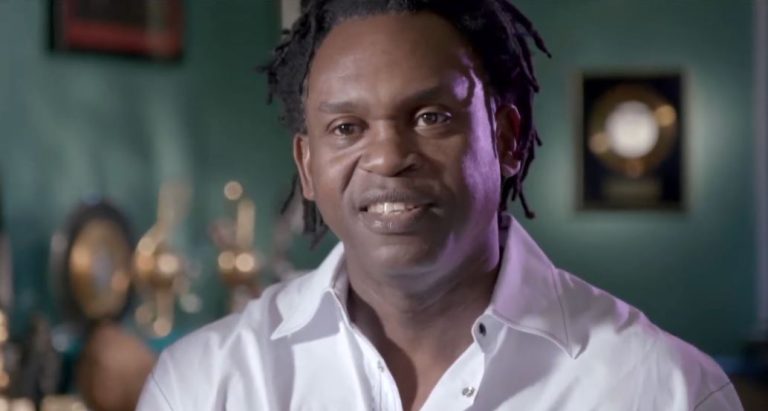Dr. Alban has changed his rhythm and presence with remarkable accuracy over the last thirty years. In addition to the success of his early mega-hits, his financial footprint—which is projected to be around $5 million in 2025—reflects a deliberate longevity strategy based on independence and cultural relevance.
He moved to Sweden in his early twenties to pursue a dental degree after being born Alban Uzoma Nwapa in Oguta, Nigeria. Eventually, he traded in the dental chair for the stage in order to support himself as a club DJ. The pivot proved to be remarkably successful. When global music was still dabbling in African rhythms, his breakthrough hit, “Hello Afrika,” came out in 1990, brashly celebrating identity. After two years, “It’s My Life” became a commercial hit and an anthem of self-determination throughout Europe. In Germany and the Netherlands, among other major markets, that single went platinum and sold over two million copies in Europe.
Dr Alban Net Worth (2025 Edition)
| Name | Dr. Alban (Alban Uzoma Nwapa) |
|---|---|
| Date of Birth | August 26, 1957 |
| Age (as of 2025) | 67 years old |
| Nationality | Nigerian-Swedish |
| Birthplace | Oguta, Imo State, Nigeria |
| Residence | Stockholm, Sweden |
| Occupation | Musician, Producer, Former Dentist |
| Famous Songs | “It’s My Life”, “Hello Afrika”, “No Coke” |
| Record Sales | Over 16 million worldwide |
| Record Label | Founder of Dr. Records |
| Estimated Net Worth | Around $5 million (as of 2025) |
He kept more control over his music and its earnings by starting his own label, Dr. Records, which was a particularly creative move in a decade when big production companies predominated. Over time, this choice significantly increased his earning potential. Particularly during the 2000s digital revolution, artists like him who maintained their rights and continued to be active in production and publishing were uniquely positioned to profit from future royalties.
Although Dr. Alban’s musical career never really ended, his popularity did decline in the late 1990s and early 2000s. Live performances, however, allowed him to preserve what he lost in airplay. In Russia and Eastern Europe, where Eurodance had a surprisingly strong hold on party culture, his music remained popular. Nostalgia tours and DJ sets that included his classic songs—many of which continue to receive millions of streams every year—rekindled his legacy even in Western Europe.
The anonymity that many one-hit artists fall into was avoided by Dr. Alban by utilizing consistent branding and a distinct sound. His distinctive sound, which combines dancehall, Eurodance, and reggae, is still easily identifiable. In fact, according to recent data from Popnable, his digital revenue in 2025 alone was estimated to be around $755,900. This shows that, with careful management, legacy catalogs can still be very effective at producing steady revenue.
He expanded his musical relevance well beyond his original era through strategic alliances and collaborations, such as several tracks with German producer Sash! and a reworked version of “Hello Afrika” for the 2010 FIFA World Cup. His continued dedication to reinvention was demonstrated in 2014 when he and pop singer Jessica Folcker participated in Sweden’s Melodifestivalen. The performance was a cultural event that reminded Sweden—and Europe—that Dr. Alban was still creatively active, even though the duo did not win.
He has engaged in social interaction in recent years. He released “Hello Sverige” and “Hello Nations,” both of which were adaptations of his 1990 anthem, during the COVID-19 pandemic. Despite not being commercial successes, these releases were especially helpful in enhancing his reputation as a purpose-driven artist. Notably, these performances expanded on his past socially conscious lyrics, which included themes of peace in “Sing Hallelujah” and anti-drug messages in “No Coke.”
Even though some public reports pointed out business errors, such as a loss of more than 14 million SEK, Alban has handled the fallout with remarkable composure. According to Swedish media, that setback didn’t seem to jeopardize his long-term financial security. His varied revenue sources, which included live performances, international licensing, and streaming royalties, served as a safety net. Artists like MC Hammer and Sinéad O’Connor, whose fortunes changed over time but whose legacies were never merely characterized by highs and lows, exhibit a remarkably similar level of tenacity.
The personal life of Dr. Alban gives his story even more nuance. Despite having two daughters and spending almost 20 years together, his marriage to Swedish teacher Katrine Hermansson ended in 2021. He has continued to raise his kids in Stockholm while advancing his career. His affiliation with Nigerian customs extends beyond music, as evidenced by his title of “Ogbuagu,” which was bestowed upon him in recognition of his position within the Igbuu community of Oguta.
The fact that Dr. Alban has embraced modern tools, albeit at his own pace, is particularly encouraging. Tour dates, merchandise, and sporadic digital exclusives are all updated on his website. He is present on sites like TikTok and YouTube Shorts, even though he doesn’t dominate them. Younger DJs frequently sample or remix his music, which helps his catalog. This natural reach is a silent force that keeps bringing his music to new listeners.
It is clear that his wealth is influenced by more than just music sales when looking at his net worth through this prism. It captures adaptability, cultural impact, strategic independence, and a slow-burning influence that continues to pay off. Even though Dr. Alban isn’t on the current pop charts, his brand is still remarkably adaptable and subtly strong.


